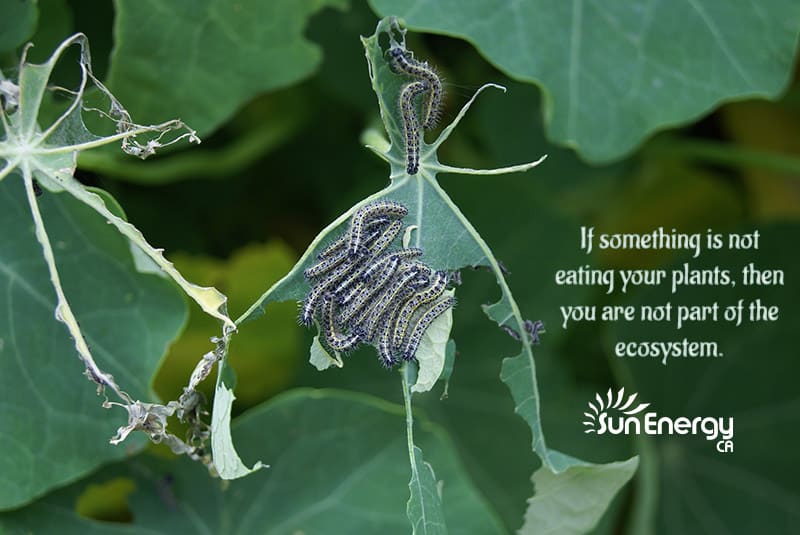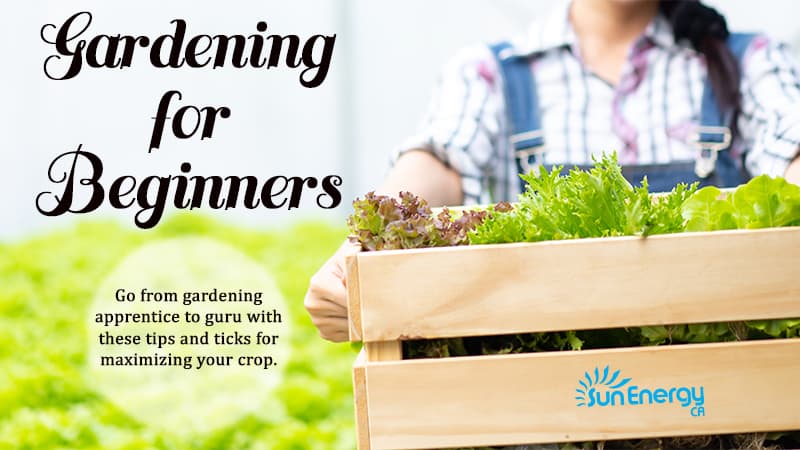Starting a home garden? For many avid gardeners, their garden is their favorite place to be. Planting seeds and digging in the dirt is therapeutic for all gardening enthusiasts. Unfortunately, if this hobby has piqued your interest, simply getting started can be overwhelming and intimidating. What should I plant first? What plants are the easiest when you’re new? How often do I need to water?
Well, rest easy, future grower. Here are some tips to maximize your success and take you from a gardening apprentice to guru in no time:

Start Your Garden Small
It’s easy to make the mistake of going too hard when you’re a beginner, but that’s not how gardening works, especially when just starting out. Remember, baby steps. It’s smart to start with manageable goals and easy-to-grow plants. Look into square foot gardening, and start with something small. Lettuce and beans are a fantastic starting point. Take your time, and really learn how your first plants grow before you add something else. Starting too big will cause you to feel overwhelmed and ultimately fail. Trust me on this.
Consider Your Climate When Starting Your Garden
I see this way too often. Just because you want to grow something specific, that doesn’t necessarily mean it’s a good idea. Certain plants just grow better in certain climates and the best thing you can do for your success is not disregard this very important rule. For example, we here at Bright Solar Power California are located in the High Desert of Southern California and cold weather crops don’t stand much of chance here because of our warm, dry climate.
For our area and warmer climates, it’s wise to go with warm season vegetables. Do not neglect the research. If you’re here with us in the High Desert, check out Gardening in the Desert.
Plant What You Eat
Do you love squash? Great! Do you prefer tomatoes? Even better. If everyone in your family hates carrots, don’t plant them. You would think that this wouldn’t have to be said, but I see gardens go wrong often due to the lack of desire to harvest them. If you only consume squash in soups that aren’t frequently cooked, it may be best for you to only plant one or two of the plants. Whatever you do, don’t waste food, or your time.

Label Your Plants In The Garden
Depending on the crop, some seeds can take some time to germinate or sprout. The last thing you want to happen is to forget what was already planted. It’s also helpful so you can see what is doing well in your garden and what’s not. Why buy seeds if they don’t grow in your soil? Am I right?
Spacing Is Important
I can’t emphasize this enough. Trying to maximize your gardening real estate is a horrible approach. Plants need space so it’s important to try not to cram as much as possible in the area you have. Crowding your grow can lead to even more problems with pests and disease, so be smart about placement. Additionally, it’s worth mentioning here that some plants cannot be planted next to others, like onions and garlic, for example. Check out LoveToKnow Home and Garden for more information on this.
Mulch is Better
Weeds are no fun for anyone. Weeding is a quick process as long as you do it daily. However, neglecting the weeds in your garden can cause your plants to get choked out and die. It doesn’t help that weeds grow really fast, either (hence the phrase “growing like a weed”). Mulching your garden helps keep the weeds at bay because it’s more difficult for them to grow through it. There’s a variety of mulch to choose from when covering your soil. Pick one, they all work well for the most part (I prefer wood chips).
Water Intentionally
Do not water without thinking about what you’re doing and why you’re doing it. Always test the soil first and make sure it’s not still damp before watering. If you can use irrigation or a drip hose instead of a sprinkler system that will be helpful as plants like to be watered at their base as opposed to over the top. Try to water in the morning or in the evening to avoid loss through evaporation. Remember, if Mother Nature isn’t watering your crops for you, then you will have to. Most plants need a good watering at least once or twice a week. Just make sure you do the research on how each specific plant likes to be watered and stay consistent.

Prepare for Pests
You cannot just plant your garden and hope for the best from Mother Nature. You have to know your area and plan accordingly. Pests are just part of the package, and being proactive will help you control this problem. Research organic pest control options as well as companion planting. Companion planting is a way of planting crops that go well together to help with pollination, pest control. Companion planting even provides a desirable habitat for those good insects that every garden needs.
Keep A Garden Journal
With all the research and detail that goes into gardening, you think you’ll remember, but you won’t. Keeping a log of important information regarding your crop keeps you organized without relying on your memory. Some folks even sketch their gardens out when they plan. This also helps you keep track of the kinds of pests you fought off and any issues, conclusions or ideas you came up with during the process.

Keep Your Garden Soil Healthy
Your soil is the most important part of your garden and without its health, your garden suffers. Before starting your garden each year, make sure you amend the soil before you start planting. You can use manure or compost to do this; the more rotten, the better. Soil also likes epsom salt. Make sure you know the kind of soil your plants like and follow the rules for maintaining healthy soil. Diagnosing health deficiencies in your soil and plants is a process is not a fun process.
Plant Flowers in Your Garden
Repeat after me, FLOWERS EQUAL POLLINATION. You need your pollinating friends to visit in order to get your garden to its full potential. Planting flowers in and around your vegetables will help attract bees and other beneficial insects which also help with pest control.
Questions, concerns, comments? Let us know below! We would also love to hear about any obstacles you had to overcome as a beginner gardener. Thanks for reading!

